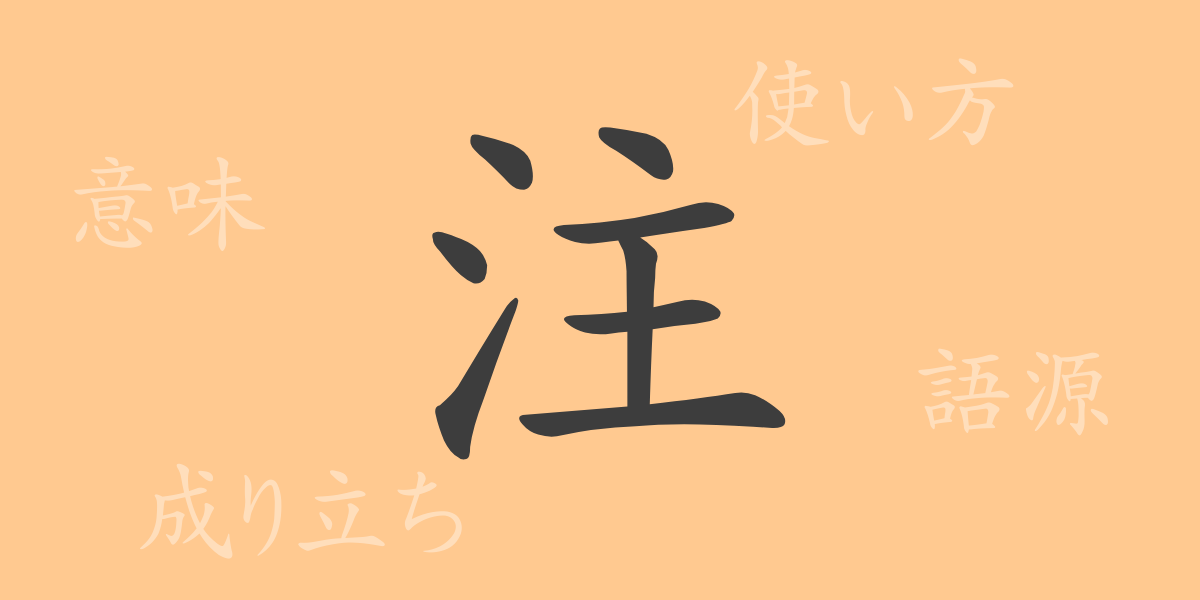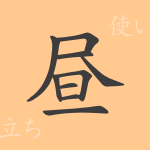The richness of the Japanese language is reflected in its intricate and beautiful characters. Today, we focus on the common Kanji ‘注(ちゅう)’, exploring its profound meanings and uses. Words are the threads that weave culture, and ‘注’ embodies deep significance well beyond a mere character. In this article, we delve into the origins, modern applications, and associated phrases and proverbs of the Kanji ‘注’.
Origins of ‘注(ちゅう)’
The Kanji ‘注’ originated in ancient China as an ideographic character. It depicts the act of pouring water, initially represented by the combination of the character for water ‘氵'(さんずい) and actions implying ‘flow’ and ‘direct’. Over time, ‘注’ evolved to represent not only physical pouring but also concepts like ‘concentration’ and ‘focusing energy or attention’.
Meaning and Usage of ‘注(ちゅう)’
‘注’ primarily means to pour or to focus. It is used in various contexts such as ‘注ぐ'(そそ.ぐ) for pouring a liquid, ‘注目'(ちゅうもく) for attracting attention or interest, and ‘注文'(ちゅうもん) for placing an order. These applications illustrate the versatile use of ‘注’ in everyday Japanese, indicating both physical and metaphorical pouring or concentrating.
Readings, Stroke Count, and Radical of ‘注(ちゅう)’
The character ‘注’ is familiar to the Japanese due to its usage and significance:
- Readings: On’yomi ‘チュウ’, Kun’yomi ‘そそ.ぐ’, ‘さ.す’, ‘つ.ぐ’
- Stroke Count: Comprises 8 strokes.
- Radical: The radical is ‘氵'(さんずい), related to water and fluid actions.
Phrases, Idioms, and Proverbs Involving ‘注(ちゅう)’
There are numerous idioms and phrases involving ‘注’, reflecting its integral role in the language:
- 注目: To attract attention, often used to describe someone or something that draws public interest.
- 注文: To place an order, commonly used in restaurants or any service industry.
- 注入: To inject, metaphorically used to denote instilling ideas or principles.
- 注視: To watch closely, implying careful observation or scrutiny.
- 注進: To submit a report or opinion, particularly in formal and bureaucratic contexts.
Conclusion on ‘注(ちゅう)’
The Kanji ‘注’ symbolizes the depth of the Japanese language, from its historical origins to its multifaceted applications today. While seemingly simple, it encapsulates powerful concepts of focus, attention, and intention, central to both communication and cultural expression. This exploration of ‘注’ offers insights into the complex beauty of Japanese characters and their capacity to convey profound cultural values.

























